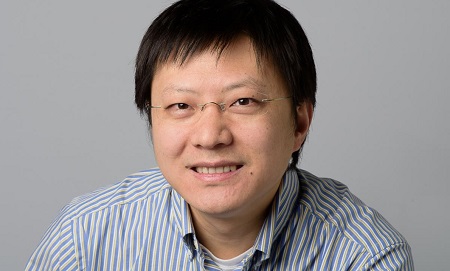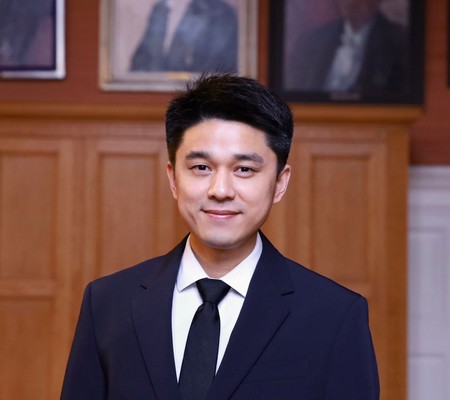Scientists find first evidence for new superconducting state in Ising superconductor
In a ground-breaking experiment, scientists from the University of Groningen, together with colleagues from the Dutch universities of Nijmegen and Twente and the Harbin Institute of Technology (China), have discovered the existence of a superconductive state that was first predicted in 2017. They present evidence for a special variant of the FFLO superconductive state on 24 May in the journal Nature. This discovery could have significant applications, particularly in the field of superconducting electronics.
The lead author of the paper is Professor Justin Ye, who heads the Device Physics of Complex Materials group at the University of Groningen. Ye and his team have been working on the Ising superconducting state. This is a special state that can resist magnetic fields that generally destroy superconductivity, and that was described by the team in 2015. In 2019, they created a device comprising a double layer of molybdenum disulfide that could couple the Ising superconductivity states residing in the two layers. Interestingly, the device created by Ye and his team makes it possible to switch this protection on or off using an electric field, resulting in a superconducting transistor.

Tweaking
The coupled Ising superconductor device sheds light on a long-standing challenge in the field of superconductivity. In 1964, four scientists (Fulde, Ferrell, Larkin, and Ovchinnikov) predicted a special superconducting state that could exist under conditions of low temperature and strong magnetic field, referred to as the FFLO state. In standard superconductivity, electrons travel in opposite directions as Cooper pairs. Since they travel at the same speed, these electrons have a total kinetic momentum of zero. However, in the FFLO state, there is a small speed difference between the electrons in the Cooper pairs, which means that there is a net kinetic momentum.
‘This state is very elusive and there are only a handful of articles claiming its existence in normal superconductors,’ says Ye. ‘However, none of these are conclusive.’ To create the FFLO state in a conventional superconductor, a strong magnetic field is needed. But the role played by the magnetic field needs careful tweaking. Simply put, for two roles to be played by the magnetic field, we need to use the Zeeman effect. This separates electrons in Cooper pairs based on the direction of their spins (a magnetic moment), but not on the orbital effect—the other role that normally destroys superconductivity. ‘It is a delicate negotiation between superconductivity and the external magnetic field,’ explains Ye.
Ising superconductivity, which Ye and his collaborators introduced and published in the journal Science in 2015, suppresses the Zeeman effect. ‘By filtering out the key ingredient that makes conventional FFLO possible, we provided ample space for the magnetic field to play its other role, namely the orbital effect,’ says Ye.

Devices
‘What we have demonstrated in our paper is a clear fingerprint of the orbital effect-driven FFLO state in our Ising superconductor,’ explains Ye. ‘This is an unconventional FFLO state, first described in theory in 2017.’ The FFLO state in conventional superconductors requires extremely low temperatures and a very strong magnetic field, which makes it difficult to create. However, in Ye's Ising superconductor, the state is reached with a weaker magnetic field and at higher temperatures.
In fact, Ye first observed signs of an FFLO state in his molybdenum disulfide superconducting device in 2019. ‘At that time, we could not prove this, because the samples were not good enough,’ says Ye. However, his PhD student Puhua Wan has since succeeded in producing samples of the material that fulfilled all the requirements to show that there is indeed a finite momentum in the Cooper pairs. ‘The actual experiments took half a year, but the analysis of the results added another year,’ says Ye. Wan is the first author of the Nature paper.
This new superconducting state needs further investigation. Ye: ‘There is a lot to learn about it. For example, how does the kinetic momentum influence the physical parameters? Studying this state will provide new insights into superconductivity. And this may enable us to control this state in devices such as transistors. That is our next challenge.’
Reference: Puhua Wan, Oleksandr Zheliuk, Noah F.Q. Yuan, Xiaoli Peng, Le Zhang, Minpeng Liang, Uli Zeitler, Steffen Wiedmann, Nigel E. Hussey, Thomas T.M. Palstra & Jianting Ye: Orbital Fulde–Ferrell–Larkin–Ovchinnikov state in an Ising superconductor. Nature, 24 May 2023.
More news
-
19 December 2025
Mariano Méndez receives Argentine RAÍCES award
-
18 December 2025
Why innovate, and for whom?
-
17 December 2025
Ben Feringa wins Feynman Prize
